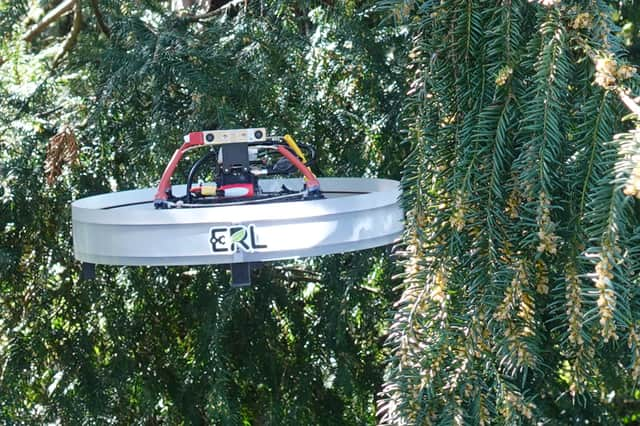New drone could help measure biodiversity as it 'creeps' through the trees - and it's based on a cockroach
This article contains affiliate links. We may earn a small commission on items purchased through this article, but that does not affect our editorial judgement.
and live on Freeview channel 276
European researchers have developed a drone that can find its way through tree branches just like an animal can - taking inspiration from a rather unusual source.
The new “aerial robot” was created by a team of scientists from ETH Zurich, the Swiss Federal Institute for Forest, Snow and Landscape Research (WSL), and University of Pisa, with their findings recently published in prestigious science journal Nature Communications. Researchers hope the device could be used to help monitor and assess biodiversity, in some of the world’s most hard-to-reach and wild places.
Advertisement
Hide AdAdvertisement
Hide AdDrones usually see foliage as obstacles that should be avoided, WSL said in a statement, but valuable data on how well different plant and animal species were doing lay hidden beyond dense vegetation. Taking inspiration from nature, they managed to build an aerial robot that could push away and slide through obstacles. The nature in question: the oft-maligned cockroach.


Lead author Emanuele Aucone said that collecting ‘environmental DNA’ samples, which can help identify all of the different species present in an area, was of enormous value for for biodiversity monitoring. However, collecting samples in forests proved more complicated than other areas - with past drone experiments struggling to make their way through the canopy.
“Flexible obstacles like branches are especially challenging because they put oscillations on the drone when it tries to cross them. So we had to design the drone more specifically,” he said. The researchers looked to animals for inspiration, which are able to move through vegetation by sensing it touching their body and reacting flexibly.
They were able to give the drone the possibility to sense physical contact with the environment all around its body, and a haptic feedback control to react, similar to how a cockroach senses its environment. They also gave it a rounder, more streamlined shape made of a low-friction material, reminiscent of the insect’s body shape. Experiments showed that these features helped the drone slide through branches and leaves - whereas drones with less rounded bodies got stuck.
Advertisement
Hide AdAdvertisement
Hide AdAucone said the next step was to develop a body that can sense and react to multiple objects at once. “The further we move into the forest, the more obstacles our drone encounters simultaneously. To access the inside of canopies, the drone needs a full body sensing capability,” he said.
“Our work makes an initial contribution towards monitoring currently unreachable areas”, he continued. But Aucone said environmental monitoring was just the start of the new drone’s potential applications. He believed it may one day be used to help with precision agriculture, or even search and rescue.
Amber Allott is NationalWorld’s environment and sustainability specialist, covering all things green - from climate to conservation. If you liked this article you can follow Amber on X (Twitter) here and sign up for the free daily NationalWorld Today newsletter here - with Amber bringing you the UK's most important, pressing, weird and wonderful environmental stories every Tuesday.
Comment Guidelines
National World encourages reader discussion on our stories. User feedback, insights and back-and-forth exchanges add a rich layer of context to reporting. Please review our Community Guidelines before commenting.
